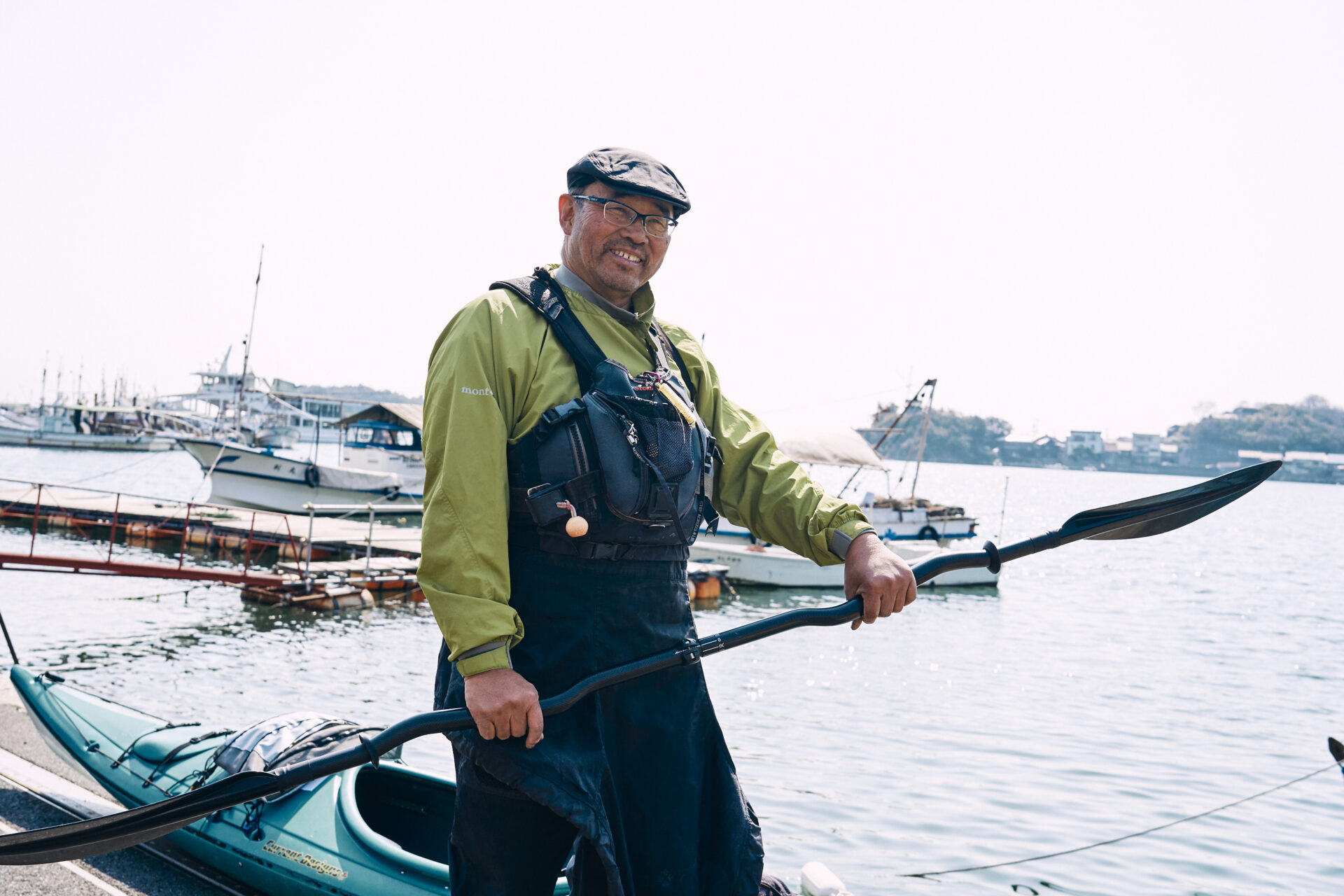
A Harbor Town Where the Streetscape of the Edo Period Remains Intact. Preserving the Unique Value of This World-Rare Town

村上 泰弘
Yasuhiro Murakami
Tomonoura [Hiroshima]
Yasuhiro Murakami
Born in Fukuyama City, Hiroshima Prefecture. After graduating from university, he worked at a television production company, where he was involved in fishing programs among others, and began kayaking as a hobby. At 40, he resigned from the television production company and became independent. In 2000, he founded "SETOUCHI Seakayak Adventures Murakami Suigun Shokai," a tour company offering sea kayaking experiences. Since then, he has been providing tours rooted in his hometown of Tomonoura.
Tomonoura, situated in the center of the Seto Inland Sea, flourished from ancient times as a port waiting for the tide and still retains the appearance of a port town from the Edo period(1603-1868).Murakami Yasuhiro, representative of "Murakami Suigun Shokai," offers sea kayaking experiences here. We asked Murakami, who loves the sea, about the potential he sees in Tomonoura and why he has chosen sea kayaking as his livelihood in this location.
From a television director to a guide of the seas.
“Originally, my family was from a line of fishermen in Fukuyama City, and as a child, the hand-rowed wooden boat at home was my plaything. Even back then, I loved the view overlooking the sea.” says Murakami Yasuhiro. Even after leaving his hometown to work at a television production company, amidst his busy schedule, he never forgot the beauty of Tomonoura.
“I was also in charge of fishing programs, so I traveled to seas all over Japan for work. Each sea has its own charm, of course, but whenever I returned to Tomonoura between work, I always found it beautiful. Each time, I thought, ‘Someday, I want to work related to Tomonoura.'”
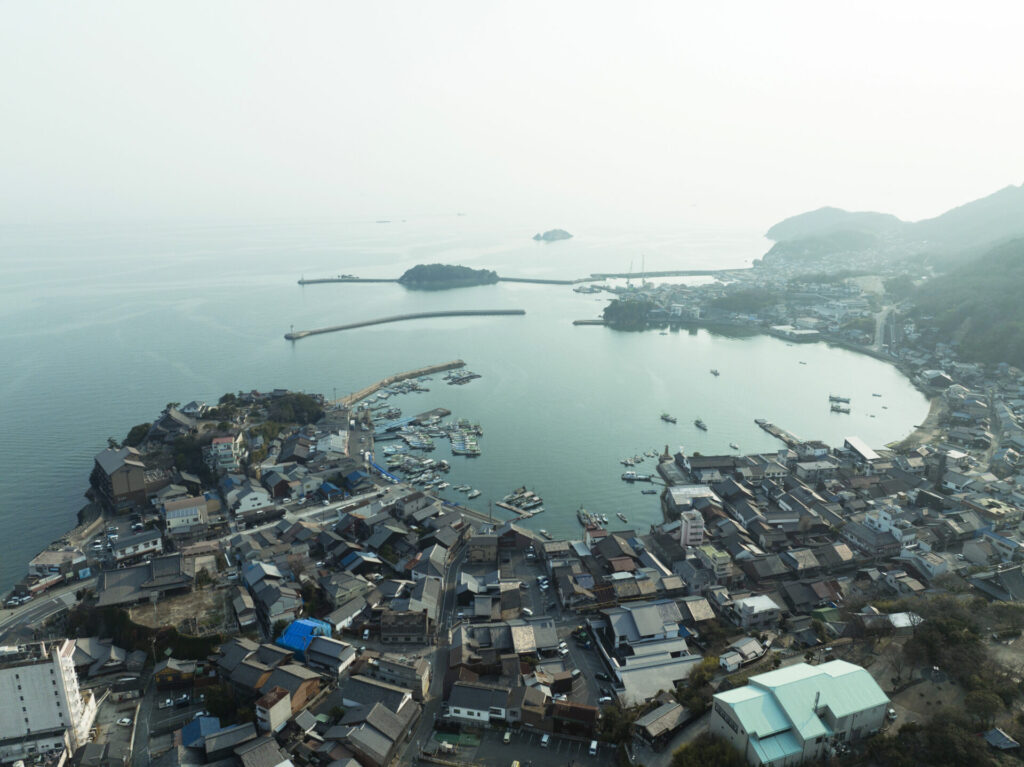
Murakami, who was active both professionally and personally in the maritime field, was particularly engrossed in kayaking.
“I started kayaking as a hobby, but I’ve been doing it for over 35 years now. The view from the sea level offers a freshness that you can’t experience normally.”
Tomonoura flourished as a maritime traffic hub since the Muromachi period(1336-1573) and was formed with the assumption of approaching from the sea. Murakami realized that the view from the kayak held clues to the path he would take in the future.
“Viewing Tomonoura from a kayak is like reliving the perspective of ancient people who loved the sea. I thought this was the only way to convey the charm of Tomonoura as a historic harbor town.”
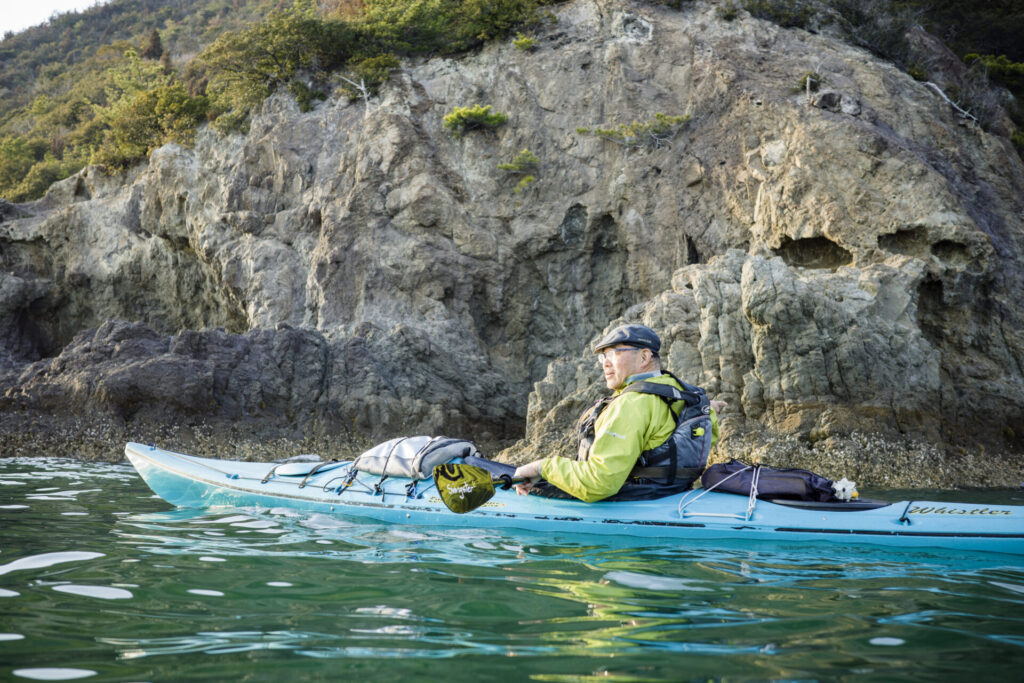
Thus, he resigned from the television production company he had worked for until the age of 38 and founded “Murakami Suigun Shokai” in 2000, a company offering sea kayaking experiences.
The “past” history that has been accumulated and the “present” activities that are woven daily are what he wants to convey.
Tomonoura, located in the center of the Seto Inland Sea, has a landscape that evokes a sense of nostalgia among many harbor towns.
“In Tomonoura, the streetscape of a harbor town built over 300 years ago during the Edo period remains intact. For example, Tomonoura is the only harbor where all five facilities from that time – Gangi (boarding piers), breakwaters, night lights, boat checkpoints, and Tadeba (burning places) – are preserved. In fact, some of these facilities are used in the sea kayaking tours.”
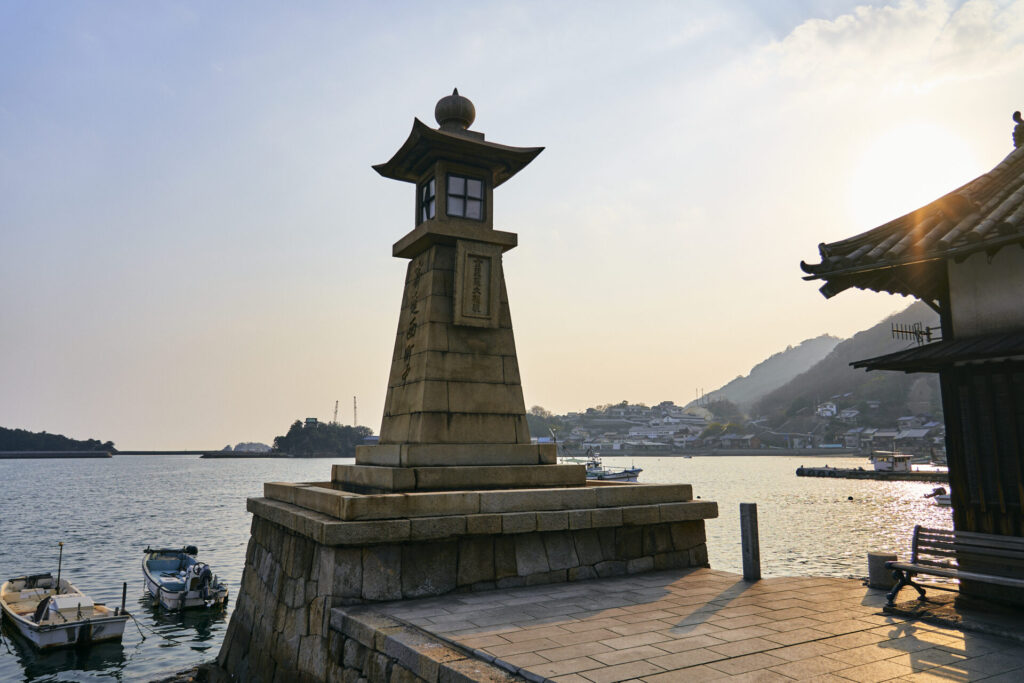
The sight of moored fishing boats, the old townhouses, and the narrow alleys are all deeply atmospheric. It is said that Sakamoto Ryoma walked through Tomonoura while staying for a certain task. In recent years, Tomonoura’s unique location has been chosen as the setting for Studio Ghibli’s popular film “Ponyo on the Cliff by the Sea” and as a location for Hollywood movies.
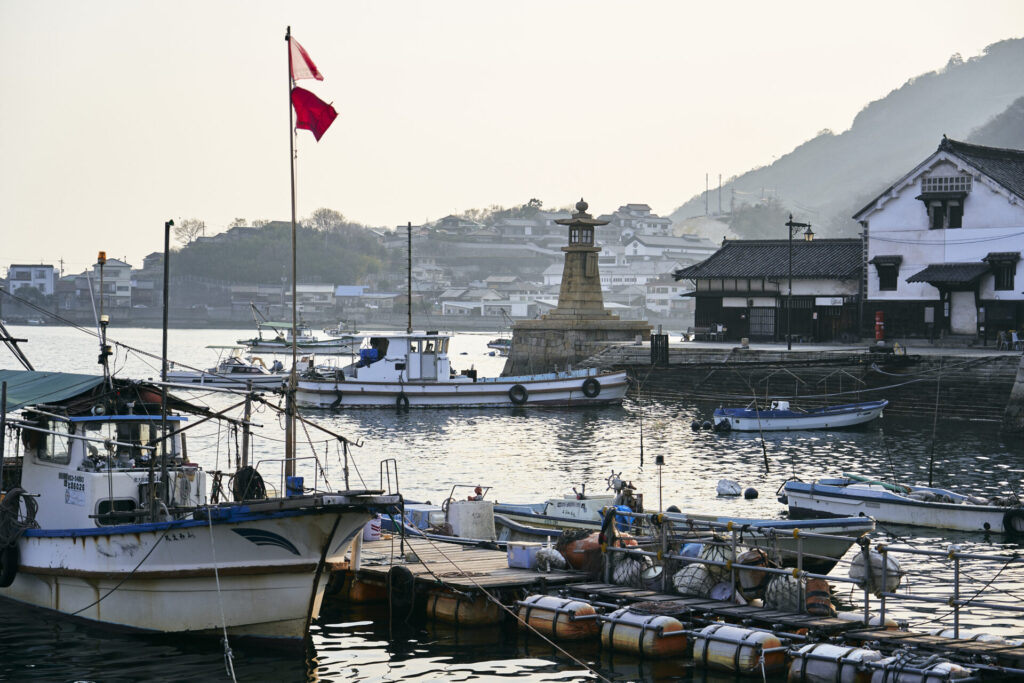
Murakami’s tours feature not only the “past” Tomonoura but also the “present” Tomonoura.
“In the tours, we talk with people from the Tomonoura shopping district where our store is located, visit the aquaculture farms of acquaintances who are fishermen to taste fresh seaweed, and sometimes eat at the market’s cafeteria with the locals. I believe these encounters, which I can provide because I live in Tomonoura interacting with various people, are unique to our tours.”
He wants to pass on the “world heritage level” value of Tomonoura to future generations.
The old town, where many ancient structures are visible and people’s lives continue to thrive, is rare even on a global scale. Indeed, the International Council on Monuments and Sites (ICOMOS), which deals with the registration and protection of world heritage sites, has shown interest, stating that “like Venice in Italy, the entire town is worth preserving as a cultural heritage.”
“ICOMOS has said that we would likely be approved if we just applied, but there are concerns that becoming a world heritage site could become a burden due to strict standards in an already understaffed situation, or that it might become difficult to maintain the current lifestyle culture when people start flocking in. Despite these conflicts, the fact remains that Tomonoura has streetscapes worthy of world heritage. I believe it’s our mission to convey this value to future generations.”
Tomonoura, which once prospered as a maritime traffic hub, now faces the problem of a shortage of successors. Even so, Murakami talks about continuing to convey the charm and value of Tomonoura to the people in front of him as something he can do.
“The number of fishermen in Tomonoura is decreasing. I hope to continue conveying the charm of the sea and Tomonoura through sea kayaking. This is not limited to tourists visiting from outside Tomonoura. I want the local children in Tomonoura to also row kayaks and rediscover the charm of their hometown.”
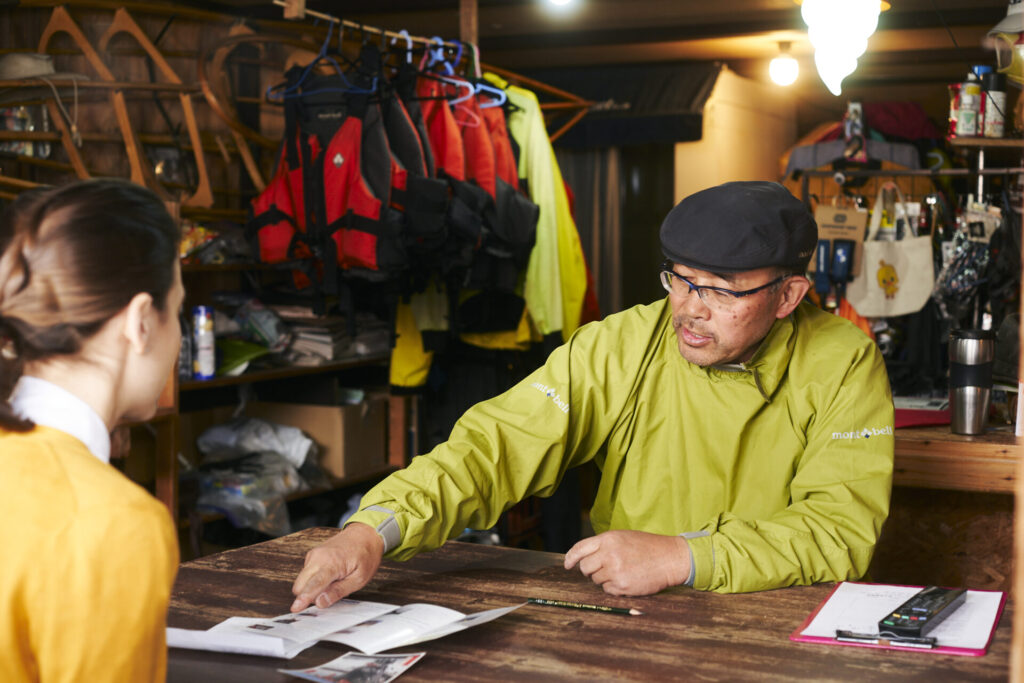
The wind caresses the cheeks, the sound of waves and ships resonates in the body, and the spray of water hits the face, tickling the nose with the scent of the tide… Paddling a quiet kayak without an engine, at a distance so close to the water, awakens the primitive senses inherent in humans, according to Murakami. Through sea kayaking, he connects the landscapes and memories of this land.
The sensations felt by people over 300 years ago through sea kayaking.
The sensations experienced throughout the body while kayaking, and the landscapes seen, are undoubtedly the same as those experienced by people over 300 years ago. Through the sea kayaking experience, I want to continue connecting the memories woven in this land.
Writer’s Impressions:
I love the nostalgic landscape of harbor towns. Especially Tomonoura, where the streetscape of the Edo period remains almost untouched, left a strong impression on me. Furthermore, I was able to touch upon the lively activities of the people in the shopping district. Tomonoura, where the “past” and “present” coexist, has become a place I want to visit again.
